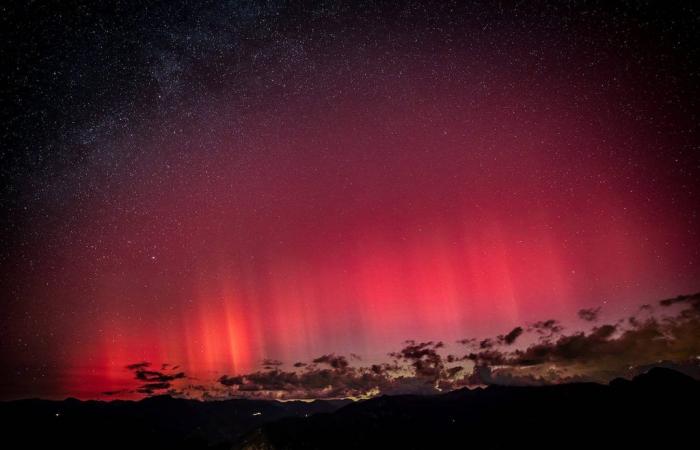Pink arabesques everywhere in the Riviera and Var skies during the night from Thursday to Friday. No need to head to the North Pole to see this fabulous celestial spectacle.
Last night, quite spectacular northern lights could indeed be observed in our two departments, as scientists had announced a few days earlier.
And dozens of you sent us your photos, after admiring this rare and unique spectacle.
“It was incredible, unique confirms Eric Lagadec, astrophysicist at the Nice Observatory. For me the most beautiful ones this year. A friend sent me a magnificent photo taken from his balcony in Riquier in Nice, breathtaking. We saw them as soon as it got dark, peaking around 1:30 a.m..”
Where does it come from?
This phenomenon is explained by the increased activity of the Sun. “The sun has a solar cycle of 10 to 13 years. We are reaching the maximum of this cycle. The Sun is therefore very active and it produces a lot of gas eruptions. When they go towards the Earth, they interact with the magnetic field terrestrial This is what produces the northern lights. Generally, they are near the poles. When the solar flares are large, they are seen here on the horizon, looking north.
And the year 2024 is currently rather favorable for this kind of spectacle. “Five or six times this year, especially in May, because this peak of Sun activity is particularly large. For what? It is linked to the Sun’s magnetic field and is still an object of research. What is certain is that this has nothing to do with global warming – which has many other harmful consequences.
The last time we had very big northern lights was in the 90s. But it was probably less publicized, notes Eric Lagadec.. “Because what changes today, The world has a smartphone in their pocket that can capture these northern lights. This is not what our eye does, which does not see many colors if it does not receive a lot of light. The reflex to have when you know that there are going to be auroras is to take out your cell phone…”
Is there still a chance of seeing the Northern Lights in the coming days? “The activity of the Sun continues. But knowing if there is going to be an eruption which will go towards the Earth and which will be big enough, it is difficult to predict several days in advance… In general it is an hour before. “
What consequences for us?
Behind the joy of the eyes aroused by the Northern Lights, “particles ejected from the Sun can disrupt electrical networks.adds the specialist.
The strongest example dates back to 1859 and the Carrington event – named after the British astronomer who studied it. “It was the biggest solar storm ever recorded, it burned the telegraphs.”
Today we no longer have telegraphs, but the world is meshed with electrical conductors – high voltage lines, catenaries, rails, pipelines, etc. – making the global electricity network particularly sensitive to the effects of solar storms.
In 1989, a major solar flare caused the complete collapse of Quebec’s electricity network for several hours.
“It is for this reason resumes Eric Lagadec that we closely monitor the activity of the Sun at the Côte d’Azur Observatory. The goal is to predict this kind of thing to avoid problems for satellites but also for planes and for communication systems in general.”






